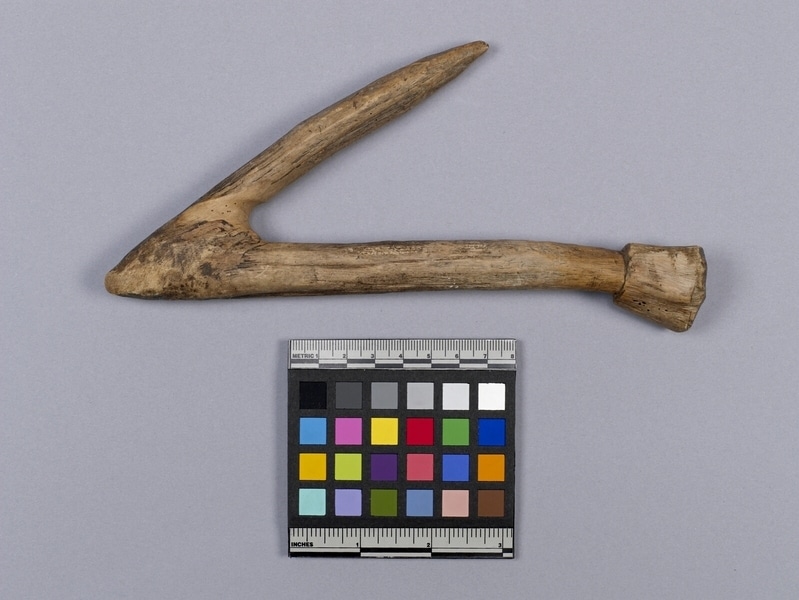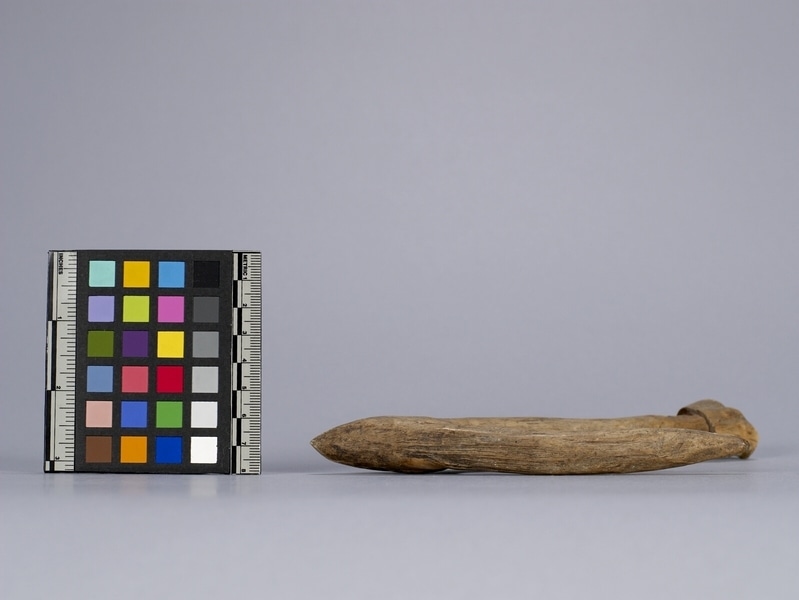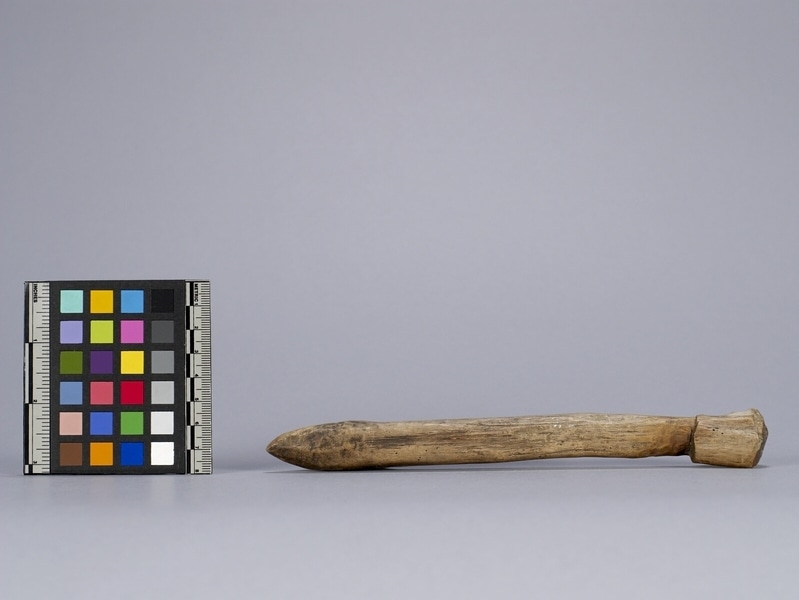Hook Item Number: Edz1095 from the MOA: University of British Columbia



Description
Unpainted, v-shaped natural branch with one pointed end; the other end is encircled by a thicker band. Worn groove in the v-shape.
History Of Use
Such hooks were regularly used by rural women in the New Territories until about 1950-60, when modern cooking fuels became available. Women went in groups to the hills to cut and dry long grass. To be carried home, the grass and bracken was bundled with a rope held in place with a hook. A bundle was carried at each end of a pointed carrying pole, with a second, thinner rope binding the heads of the grass and bracken. Hooks were made by the women who used them. After cutting a bundle of grass, the woman would wrap the rope around the bundle once, place her carrying pole on it, and wrap it again, pulling the role around the hook and tucking it in. She wrapped a thinner cord around the heads of the grass. She carried one bundle at each end of her pole, and carried it down from the mountain.
After the mid-twentieth century the New Territories of Hong Kong began to undergo fundamental changes. The people who had been settled there before 1898, when the British colonizers claimed the area, began to give up rice agriculture and coastal fishing, turning instead to wage labour and increased employment overseas. By the end of the century, educational opportunities leading to the possibility of white-collar work also increased, together with western influences. These changes meant that objects and clothing once useful and appropriate were no longer needed and generally were discarded. Some were saved by their owners, who sometimes were willing to donate them to museums, sharing, also, their knowledge of how they were made and used.
Cultural Context
fuel-gathering
Narrative
People on Tsing Yi Island are Hakka people, who are one of the two original land-dwelling groups that settled the area that became the New Territories of Hong Kong. Their spoken language, and some customs, differed from those of the other original group, the Cantonese or Punti. The Cantonese arrived first and settled on the best rice-growing lands, while the Hakka began to arrive after the late 17th century and settled the more hilly lands.
Item History
- Made in Tsuen Wan, Hong Kong, China before 1979
- Collected by Elizabeth L. Johnson during 1979
- Owned by David Chan
- Owned by Elizabeth L. Johnson before March 17, 1980
- Received from Elizabeth L. Johnson (Seller) and Museum of Anthropology Shop Volunteers (Funding source) on March 17, 1980
What
- Name
- Hook
- Identification Number
- Edz1095
- Type of Item
- hook
- Material
- guava wood
- Manufacturing Technique
- cut and carved
- Overall
- height 21.0 cm, width 2.0 cm
Who
- Culture
- Chinese: Hakka
- Field Collector
- Elizabeth L. Johnson
- Previous Owner
- David Chan and Elizabeth L. Johnson
- Received from
- Elizabeth L. Johnson (Seller) and Museum of Anthropology Shop Volunteers (Funding source)
Where
- Holding Institution
- MOA: University of British Columbia
- Made in
- Tsuen Wan, Hong Kong, China
When
- Creation Date
- before 1979
- Collection Date
- during 1979
- Ownership Date
- before March 17, 1980
- Acquisition Date
- on March 17, 1980
Other
- Condition
- good
- Accession Number
- 0610/0065